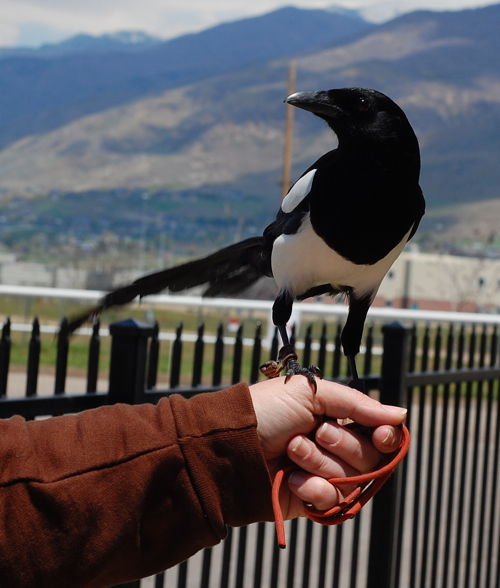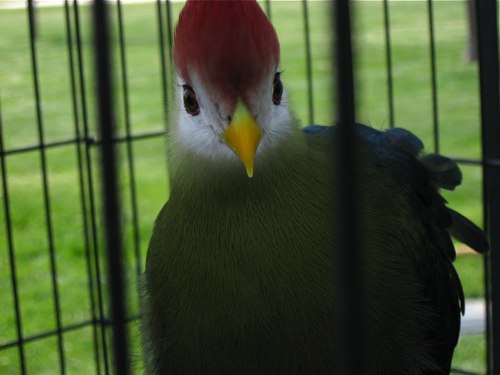For some reason, buntings are a hard bird for me to get. Both painted buntings and lazuli buntings were always fluttering out of sight just before I would arrive to see one. A common phrase, "Oh a whole flock just flew past here like five minutes ago."
I finally got painted a couple of years ago in Florida but the lazuli seemed intent on pouring salt on my wounds. When we went to Las Vegas to make bird videos, Non Birding Bill saw one and when he pointed it out, the lazuli bunting flew away and all I saw was a small bird flashing blue. Gr.

When I was at the Great Salt Lake Bird Festival this past spring, word on the street was that a flock of lazulis were hanging out at feeding station near the barn on Antelope Island State Park. I consulted Bill Thompson about this and he gave good directions. I had a tough time finding the exact location of the feeder, it was sort of hidden away in some trees. There was the above bison pen nearby but the beast was fenced up so I could keep my ungulate phobia in check. I was getting the old ungulate stare down though. That's right, bison, I'm just going about my birding business, you stay there.

The feeders were absolutely dead. There was a sprinkler nearby and some birds were using the water source. I decided to stake myself out among some bushes, set up my scope and camera and hope for the best. I figured that this would be another opportunity to NOT see a lazuli and concentrated on the few birds that did come in like the above white-crowned sparrow. Suddenly, a large flock of pine siskins descended on the feeder and I aimed my digiscoping set up on them. The feeder was in the shade and it wasn't easy to get photos, but digiscoping passed the time as I waited for a lazuli.

And then magically among the siskins was a lazuli bunting! As soon as I got this shot it took off. As it flew, I heard chip notes and then the same chip notes from other buntings in the trees above me. More were around and I'm sure this little migratory flock couldn't resist coming down to this food source. So I waited.

And in about 10 minutes, a flock of lazuli buntings were on the ground. It was a challenge getting any photos because the birds were in the shade and my camera didn't want to give me the shutter speed I needed. So I played around and used the timer.

And I did manage to get some fun shots. Note the tiny white millet seed on the tip of the beak of this male? Most birding feeding guides say to not use millet or at least not very much, but colorful buntings are one of the few species of birds that really, really like it and it's worth having a bit in your seed mixes during the spring and fall migration.

As I was living la vie da lazuli, I suddenly heard a heavy "thump, thump, thump" and it sounded like an ungulate in full trot mode right behind me. I turned around to the sound and discovered...

The bison that was in the first photo of this post was now very much out of the pen and trotting around behind me. It started trotting right at me, then turned and went the opposite direction. I tried to take a shot as it headed towards the left of the barn (you know, one of those last known photos they could find in my trampled camera next to my trampled body). The bison pretty much went in the direction I needed to go in order to get back to my car. I stayed where I was, heart pounding and recalled the video of the woman who got charged by a bison because her idiot brother-in-law threw a stick at it to get his attention. I wouldn't do anything like that, but what if I inadvertently startled it? I've said it before and I'll say it again--large ungulates make me nervous and I really don't think my Sand People technique of startling cows would work well with a bison. They are unpredictable and it's really just a matter of time until they realize how big they are and stampede the heck out of me. I went back into the trees to stay out of the bison's line of vision and debated with myself on how to get out with a rogue bison on the loose. I soon saw one of the Antelope Island rangers and went up to here, "Uh, your bison is on the loose!"
I was also going to ask for a ranger escort back to my car but she said, "Oh yeah, he's fine, it's feeding time."
I was not going to get a ranger escort back to my car. They have signs all over this island that read, "Stay away from bison" and so I found her mellow attitude about the loose animal unnerving but I also realized that I have a larger fear of bison than most and decided to man up and walk myself back to the car. I didn't encounter that particular animal...but...

...my bison encounter was not over. Bison roam this island and on the road back to the exit, a small herd was grazing along the side. I slowed and the bison decided to cross. I had to get a shot of how close this one was to the road--see the mirror of my rental car on the right hand side? I slowly drove past, the bison watched me and I assumed the sort of upright posture most drivers do when passing a police or sheriff's car that says, "No, sir, I'm not speeding, I'm a good citizen."
Small price to pay I guess for finally getting my lifer lazuli bunting.
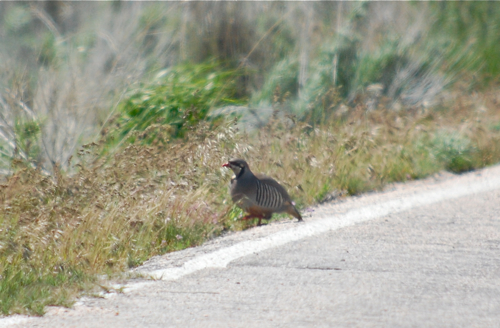
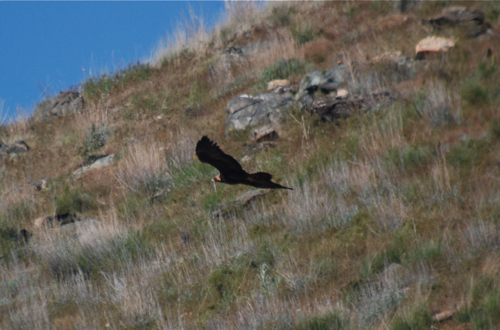
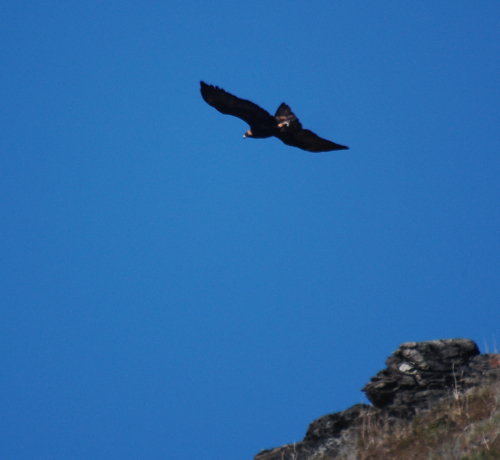

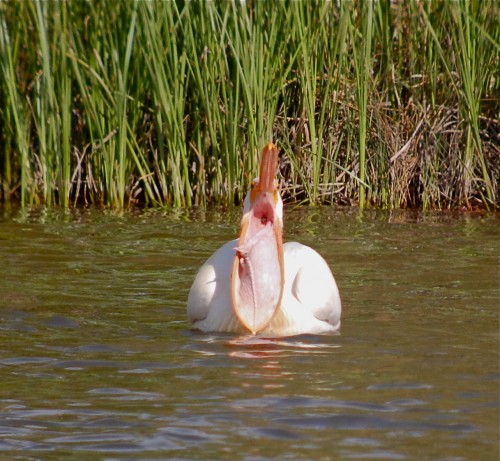 If you're a fish or crawfish, this is a terrifying site. Especially because American white pelicans will cooperatively hunt fish in the water.
If you're a fish or crawfish, this is a terrifying site. Especially because American white pelicans will cooperatively hunt fish in the water.










 He even got some prey!
He even got some prey! Harrier hunting grounds.
Harrier hunting grounds.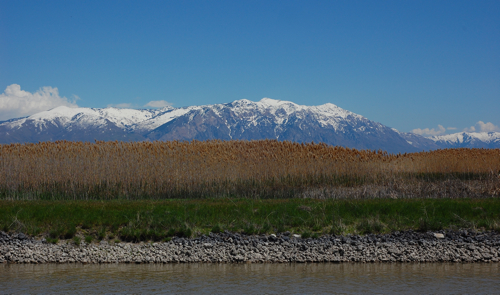 Going through spring photos and I've found a ton from Utah. I love
Going through spring photos and I've found a ton from Utah. I love 
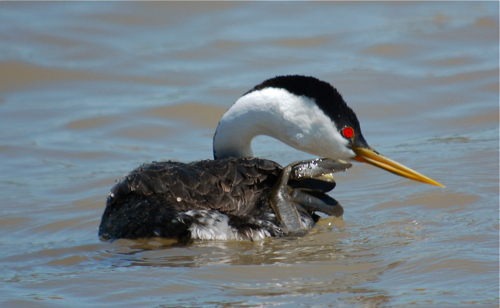
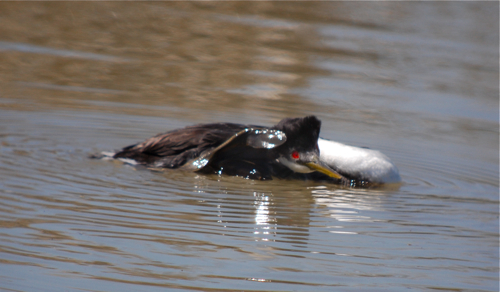
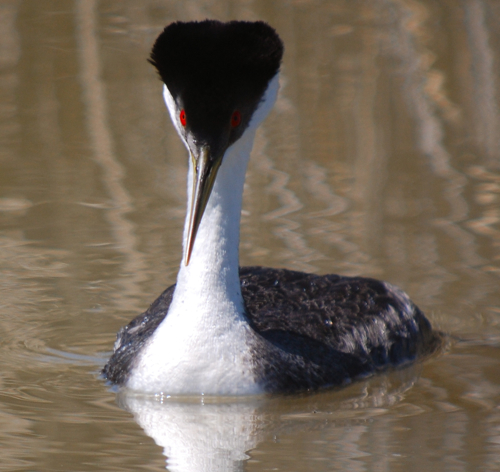
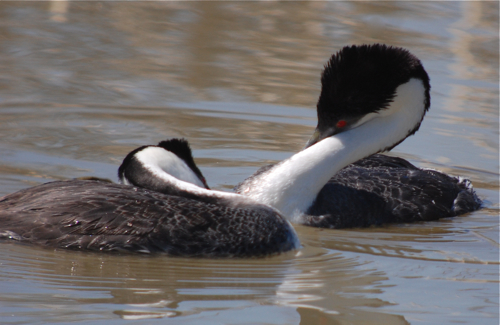
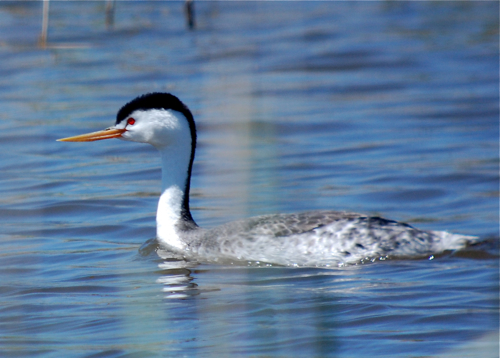
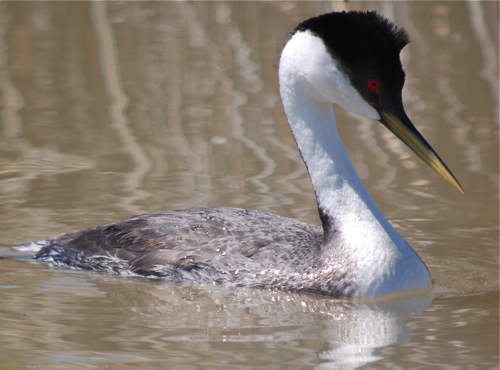
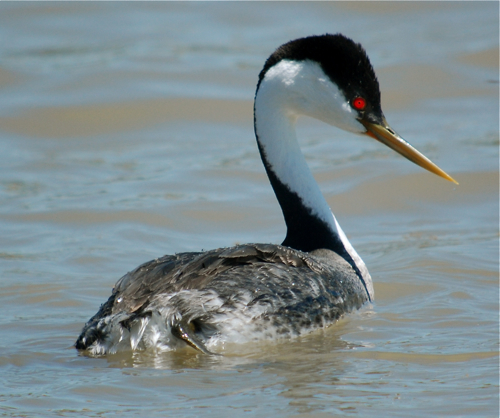
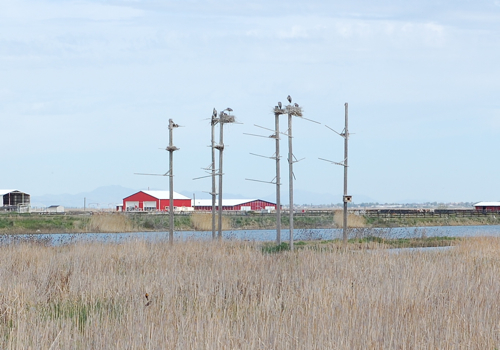
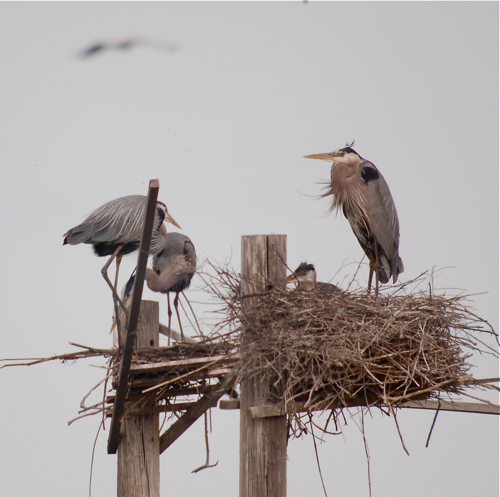
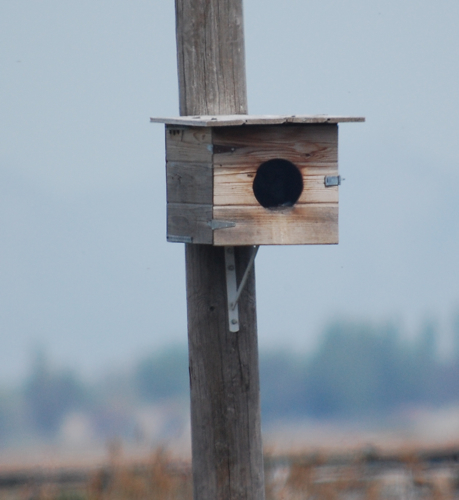








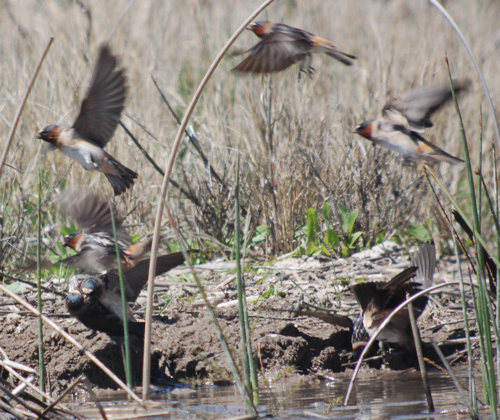


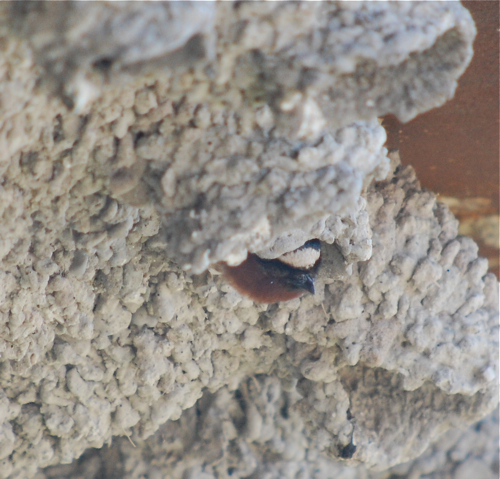 Cute little swallows.
Cute little swallows.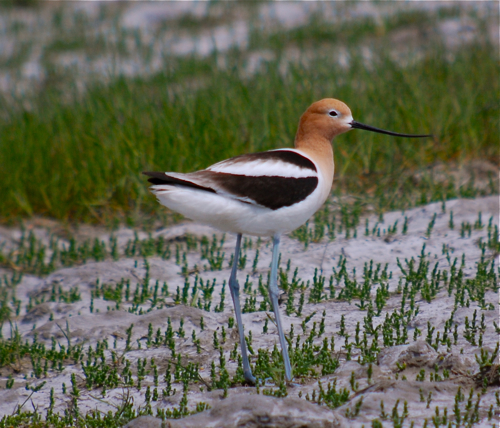
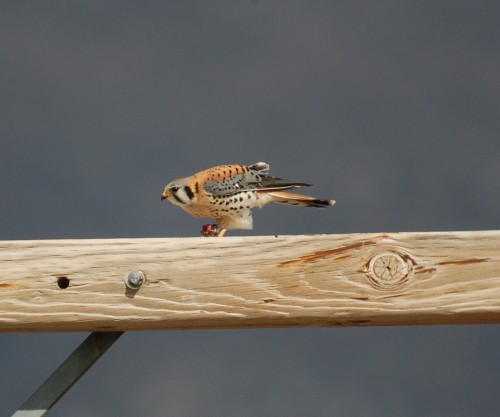
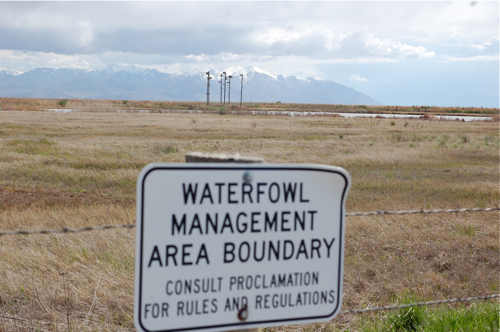
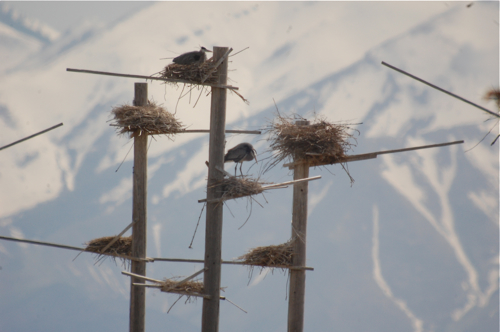 I'm used to seeing great blue
I'm used to seeing great blue 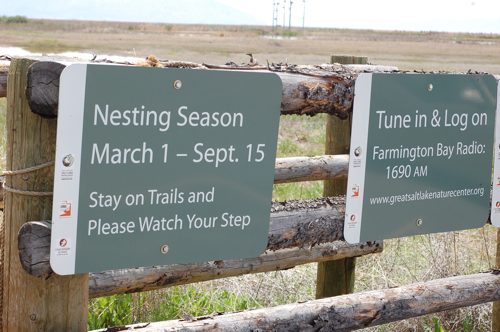 Farmington works hard to keep humans from tramping on ground nesting birds. Trails are blocked from motorized vehicle traffic during nesting season and signs warn you to watch your step.
Farmington works hard to keep humans from tramping on ground nesting birds. Trails are blocked from motorized vehicle traffic during nesting season and signs warn you to watch your step.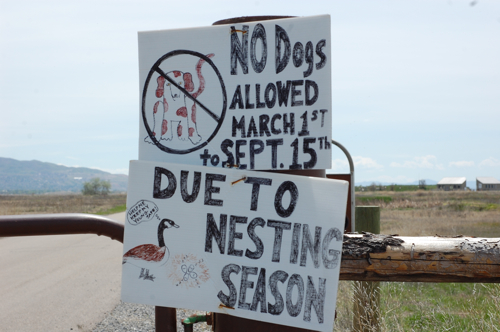
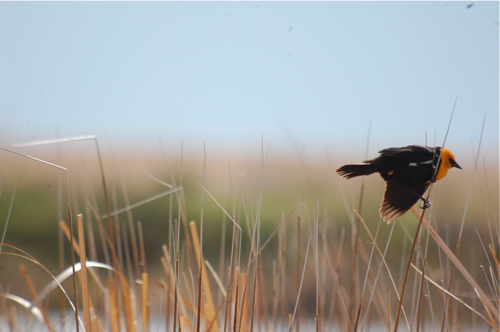
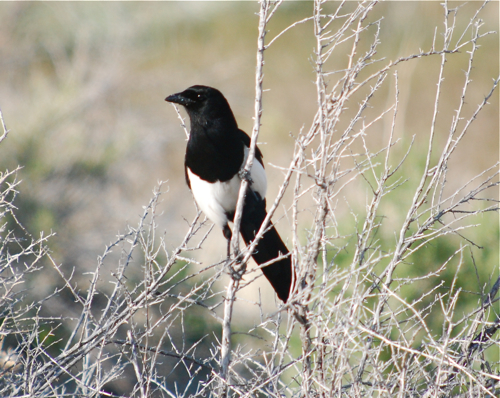 If you live in the eastern portion of the US and have never seen a magpie--Salt Lake City is the place for you. Those birds are all over the place--they're like crows (not just in family but in commonality). We have a remnant population up in northern Minnesota but not the sort of numbers you see out west. Since there are so many magpies around, there's unfortunately an opportunity for education magpies. It's illegal to keep them as pets, but someone always tries and about the time the birds reach sexual maturity, the person doesn't want the imprinted bird any more and they end up in places like
If you live in the eastern portion of the US and have never seen a magpie--Salt Lake City is the place for you. Those birds are all over the place--they're like crows (not just in family but in commonality). We have a remnant population up in northern Minnesota but not the sort of numbers you see out west. Since there are so many magpies around, there's unfortunately an opportunity for education magpies. It's illegal to keep them as pets, but someone always tries and about the time the birds reach sexual maturity, the person doesn't want the imprinted bird any more and they end up in places like 